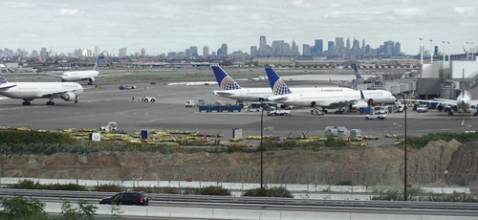
A new GPS-based technology designed to warn drivers in time to avoid collisions has anonymizing elements in its design to keep the location of vehicles private, according to the Department of Transportation (DoT).
DoT has focused a lot of effort on reducing motor vehicle accidents — a leading cause of death in the United States. Nearly 34,000 people died in collisions in 2010, the latest year for which data is available, according to the Centers for Disease Control. CDC estimates the lifetime costs of crash-related deaths and injuries in 2005 alone were $70 billion.
A new GPS-based technology designed to warn drivers in time to avoid collisions has anonymizing elements in its design to keep the location of vehicles private, according to the Department of Transportation (DoT).
DoT has focused a lot of effort on reducing motor vehicle accidents — a leading cause of death in the United States. Nearly 34,000 people died in collisions in 2010, the latest year for which data is available, according to the Centers for Disease Control. CDC estimates the lifetime costs of crash-related deaths and injuries in 2005 alone were $70 billion.
To cut the number of accidents, DoT has been developing vehicle-to-vehicle or V2V technology, a new connecting technique that enables cars, trucks and motorcycles to broadcast their location, speed, and heading. Any vehicle with V2V equipment can use that information to anticipate collisions and set off a warning to help drivers avoid crashes.
In a recent demonstration in Washington, D.C., V2V-equipped cars were able to warn drivers not to change lanes because a car was speeding up from behind and not to inch further into an intersection when another vehicle was about to run a red light. The system was able to sense dangers from cars hidden from the driver’s view by traffic and by a double-parked delivery truck at an intersection. In each case the new V2V system sounded the alarm in time for the driver to avoid a crash.
The vehicles broadcast their information 10 times a second and that data can be picked up by stoplights and other equipped infrastructure like traffic-flow gates on highway ramps, known as vehicle-to-infrastructure (V2I) communications. DoT partnered with the Crash Avoidance Metrics Partnership (CAMP) Vehicle Safety Communications 3 (VSC3) Consortium for the technology demonstration at RFK Stadium.
Anticipating concerns that such information could be seen as a way to track drivers, DoT incorporated randomization and other techniques to assure privacy-conscious drivers.
“We have gone to great lengths to insure that the individual devices are anonymous,” said one official, who spoke on background.
“The Department takes privacy very seriously,” said Gregory D. Winfree, deputy director of RITA, DoT’s Research and Innovative Technology Administration. “We have worked closely with our partners to develop multiple strategies that help protect individual privacy. As conceived, the system will contain technical, physical and organizational controls to minimize privacy risks. The system will not collect and motor vehicles will not store the messages sent or received.”
Industry Merges with DoT Research
RITA and the National Highway Traffic Safety Administration have been collaborating with eight automakers to develop and test the technology in real-world scenarios. Ford, General Motors, Honda, Hyundai-Kia, Mercedes-Benz, Nissan, Toyota, and VW-Audi each equipped cars to take part in the yearlong Safety Pilot Model Deployment, which will wrap up next month in Ann Arbor, Mich.
Although each carmaker has been using the same standards and data, they are trying different displays and techniques to warn drivers. Figuring out what works best is part of the pilot.
The carmakers are working hard to stay current on a technology that may soon be mandated nationwide.
“By the end of 2013, the National Highway Traffic Safety Administration (NHTSA) will make a decision about the future of its activities regarding connected vehicle technology for light vehicles,” said Winfree in an emailed statement, and it will make a similar decision for heavy trucks in 2014.
The agency could decide to go ahead with implementation and kick off the rulemaking process to integrate V2V into the nation’s cars and roadways — or it may determine that more research is needed. The agency must consider how it might integrate the technology into the country’s system of roads, the cost of implementation, and other factors such as how to protect the essential communication signals.
Should NHTSA decide to proceed it would likely take about five years to develop and implement the necessary regulations.
GPS Crucial, But Not Irreplaceable
One of the issues already being studied is what happens if the GPS signal is lost, either through jamming or signal blockage by, say, tall buildings.
“It has long been recognized that GPS will be unavailable in some areas, ranging from a few seconds to much longer time frames,” said Winfree. “While interference may be one reason GPS solutions are not available, more often it will simply be a result of sky blockage. When applications are fully integrated, GPS will likely be complimented with wheel sensor data for distance traveled and steering wheel sensors for direction as well as low-cost inertial sensors if risks warrant.”
Not everyone is waiting for a NHTSA’s decision.
Mercedes-Benz announced in June that would offer Car-to-X, its version of vehicle-to-vehicle collision avoidance, by the end of the year. The system will initially lean on a smartphone app for communications, including notifying other equipped drivers of road hazards.
Using a phone “promises to offer the quickest way to deploy the future technology and therefore also the quickest possible shortcut to unlocking the safety potential of Car-to-X technology,” said the company in a June 14 press release.




